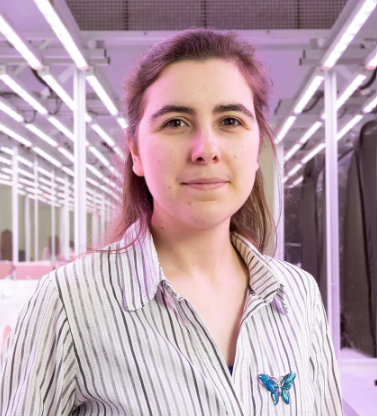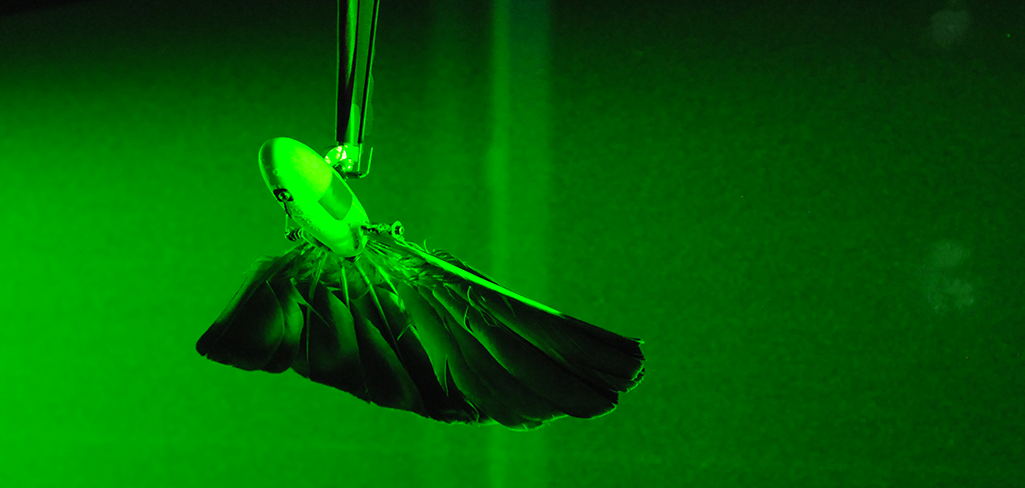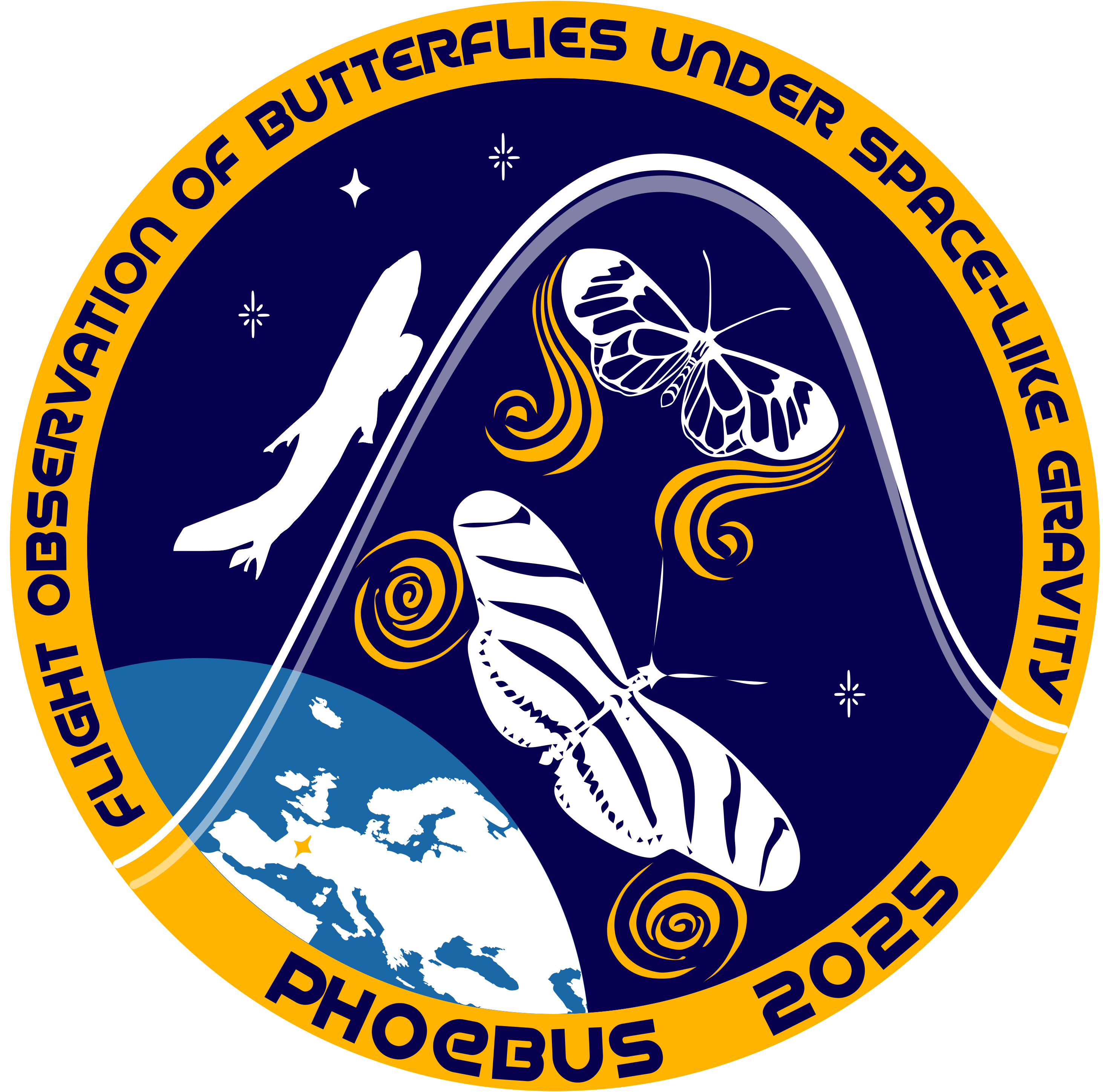
Photo credits: Sake Elzinga.
Ariane Gayout
About me
I am currently a postdoctoral researcher at the University of Groningen (Netherlands), in the Evolutionary Biophysics group since 05/2025. NWO Veni 2023 recipient, my research aims
at unravelling turbulence characteristics from insect flight adaptations.
As part of the Biomimetics group (2022-2025), my previous work focused on the
physics of bird, from adaptation to turbulence of kestrels to tail spreading dynamics and feather deformation.
I completed my PhD in Physics at the Laboratoire de Physique in the ENS de Lyon (Lyon, France), under the supervision of N. Plihon and M. Bourgoin (2019-2022).
My PhD subject is "Fluid-Structure interactions of Multi-stable pendular Systems".
The main interest of this research is to understand the various mechanisms behind multi-stability generated by wake-motion interactions.
I was nominated Amelia Earhart fellow 2021 (description of the fellowship)
Driven and permanently curious, I am specialized in experimental Aerodynamics and Non-linear Physics.
I am also interested in Ornithology, Entomology, Botanics and Photography.
WARNING: PAGE TO BE MIGRATED BEFORE AUGUST 2026
Please refer to social icons at the bottom of this page for follow-up information, when available.Research projects and interests

On the Fly: understanding turbulence through animal flight
In the atmosphere, turbulence is omnipresent and challenging to technology, yet animals all seem to navigate this continuously changing environment.
Independent postdoc work funded by NWO Talent program - Veni. In collaboration with Casper van der Kooi and Eize Stamhuis (University of Groningen: NL)

Bird tail aerodynamics
When flying, birds use their tail over a wide range of spread angles as well as angles of attack.
Especially during landing, their tail experiences high turbulence intensity and yet they manage steadiness and stability.
Postdoc work conducted at the University of Groningen, NL and LMFL, France.
Bistability of a wind-swept pendulum
When exposed to a flow, a disk pendulum exhibits a bistability for a range of flow velocities.
This comes from the change in predominancy between lift and drag in the aerodynamic forces applied to the pendulum, on both sides of the stall angle. This bistability disappears as the turbulence rate increases.
PhD work in collaboration with N. Plihon, M. Bourgoin (ENS de Lyon, France) and M. Obligado (LEGI, Grenoble, France).
Rare-event triggered transitions in Aerodynamics
In our experiment with the pendulum, we have observed spontaneous transitions in the bistable region.
Inspired by the transition to turbulence, we developed a model to explain these transitions with rare events occuring in the wake, linked with stall.
PhD work in collaboration with N. Plihon and M. Bourgoin (ENS de Lyon, France).

Unstationnary effects on aerodynamical coefficients
In our experiment, if the pendulum is equilibrated, its trajectory from the vertical to the horizontal should reflect the aerodynamic coefficient angular dependency.
Yet, we show that unstationnarity of the wake leads to great deviation from the static coefficient, with empirical added-mass and added-damping effects.
PhD work in collaboration with A. Gylfason (Reykjavik University, Iceland), N. Plihon and M. Bourgoin (ENS de Lyon, France).

Flight ObsErvation of Butterflies Under Space-like gravity
This project aims at the understanding of gravity influence on butterfly flapping motion, through parabolic flights. Project funded by the CNES.
Work in collaboration with F. Schweitzer, N. Plihon, M. Bourgoin (ENS de Lyon, France), V. Debat (MNHN, France).
Instability control through forcing
Distributed forcing over circular cylinder
We theoretically analyze the development of oscillatory flows behind a cylinder when a distributed forcing is applied.
Work in collaboration with N. Leoni (CEA Saclay, France) and D. Sipp (ONERA, France).
Plasma actuation on vehicles
We simulate how plasma actuators modify the wake of a vehicle depending on its position on the trunk and windshields.
Master internship under supervision of M. Tsubokura (RIKEN AICS / Kobe University, Japan).
Reference: Kim and Choi, 2005
Aurora Borealis
Auroras are one of the most mysterious phenomena happening regularly on Earth.
Various experiments have been conducted to simulate the aurora in laboratory.
We mounted a planeterrella to present to general audience how auroras are generated.
Work in collaboration with S. Vincent (ENS de Lyon, France).

Feather Aerodynamics
Feathers are exquisite airfoils that present no stall at any angle of incidence.
This comes from aero-elastic properties that are yet to be investigated.
Non published article on the subject to be found here.
Dispersal of Individuals in ANimal Ecology
This project applies physical concepts from Lagrangian tracking to Animal Ecology using GPS tracks from open database.
Work in collaboration with T. Basset (ENS de Lyon, France).

Stork behavior in parental care
Storks build large circular open nests to take care of their off-spring. As such, their orientation when on the nest is not imposed by the shape of the nest. Through observations of a stork couple in Moselle (France), I show that the sun plays a determinant role on this orientation, while the wind is more discreet and only influences the orientation of the parent when rain is pouring.
© Photograph rights reserved by Alsagora



